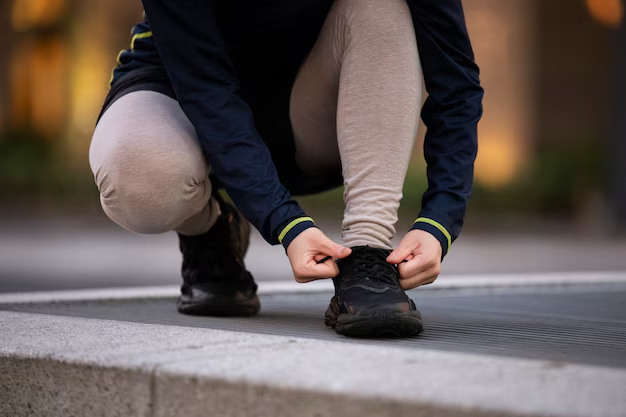Belly fat is more than a cosmetic concern—it can pose serious health risks. Excess fat around your abdomen, especially visceral fat, is linked to conditions like heart disease, diabetes, and more. While many exercises claim to reduce belly fat, walking often stands out as an effective, low-impact option. But does walking reduce belly fat? Let’s explore how this simple activity can help improve your health and shrink your waistline.
Understanding Belly Fat
Belly fat is not just one type of fat; it’s a combination of different kinds with varying health implications. Understanding this can help you appreciate why reducing belly fat is essential for overall wellness.
What is Belly Fat?
Belly fat refers to the fat stored around your abdominal area. There are two main types:
- Subcutaneous fat: Found just beneath the skin, this fat is less harmful but can still affect your appearance.
- Visceral fat: Found deeper within the abdominal cavity, this type surrounds organs like the liver and intestines. It’s the more dangerous kind and is strongly linked to health risks like insulin resistance, heart disease, and inflammation.
Why is Reducing Belly Fat Important?
Excess belly fat isn’t just about how your clothes fit; it’s a warning sign of potential health issues. Visceral fat, in particular, increases your risk of:
- Cardiovascular diseases: High cholesterol, hypertension, and other issues.
- Type 2 diabetes: Belly fat interferes with insulin sensitivity.
- Chronic inflammation: It triggers inflammatory responses in the body.
Reducing belly fat can enhance both your physical and mental health, giving you a longer, healthier life.
The Science Behind Walking and Belly Fat Loss
Walking is more than just a basic movement—it’s a scientifically-backed way to burn calories and promote fat loss, including belly fat.
How Walking Helps Burn Calories
Walking is a steady-state exercise, meaning it helps burn fat gradually over time. Here’s how it works:
- Calorie deficit: Walking increases your energy expenditure, making it easier to burn more calories than you consume. A calorie deficit is essential for fat loss.
- Consistent activity: Unlike intense workouts, walking is sustainable and can be done daily, contributing to long-term fat loss.
Walking and Hormonal Benefits
Stress can significantly contribute to belly fat due to increased cortisol levels. Walking helps by:
- Lowering cortisol: Gentle movement like walking reduces stress hormones, preventing fat accumulation in the belly area.
- Boosting endorphins: These “feel-good” hormones improve mood and reduce emotional eating, another factor in fat gain.
Does Walking Target Belly Fat Specifically?
Many wonder if walking can target belly fat directly. The truth is, spot reduction is a myth. Walking promotes overall fat loss, and as your body burns fat evenly, you’ll notice a reduction in belly fat over time. This holistic approach is healthier and more sustainable.
Related to Read: 100+ Best Foods That Burn Belly Fat Fast
Benefits of Walking for Belly Fat Loss
Walking offers several unique advantages for those aiming to reduce belly fat, making it one of the most accessible and beneficial exercises.
Low-Impact and Accessible Exercise
Walking is easy on the joints and suitable for people of all ages and fitness levels.
- No equipment required: All you need is a good pair of shoes.
- Convenient: You can walk anywhere, whether it’s your neighborhood, a park, or on a treadmill.
- Sustainable: The low-impact nature means less risk of injury compared to high-impact workouts like running.
Boosting Metabolism Through Walking
Regular walking enhances your metabolic rate, even at rest. Here’s how:
- Increased energy expenditure: Walking boosts the number of calories you burn daily.
- Lean muscle preservation: It helps maintain muscle mass, which is key for a higher metabolism.
Walking for Stress Reduction and Better Sleep
Walking improves mental health, which indirectly supports belly fat loss.
- Stress reduction: Lower cortisol levels mean less fat storage in the abdominal area.
- Improved sleep: Walking can enhance sleep quality, and good sleep is vital for regulating hunger hormones and preventing weight gain.
How to Lose Belly Fat by Walking
Not all walking routines are equally effective. To maximize results, you need to incorporate specific techniques and strategies into your walks.

Best Way to Walk to Lose Belly Fat
To make your walking routine more effective:
- Maintain a brisk pace: Aim for 3.5 to 4 miles per hour.
- Use proper posture: Keep your back straight and engage your core to maximize calorie burn.
- Incorporate arms: Swinging your arms adds intensity and helps tone your upper body.
How Much Walking to Lose Belly Fat?
The duration and frequency of your walks play a critical role in fat loss:
- Daily walks: Aim for 30-60 minutes of walking most days of the week.
- Step goals: A target of 10,000 steps daily is effective for general fat loss.
- Consistency: Regular walking, even for shorter durations, is more effective than sporadic long sessions.
Walking Techniques for Maximum Fat Burn
To optimize your walking routine, consider these advanced techniques:
- Speed walking: Alternate between brisk walking and slower recovery paces.
- Incline walking: Walking uphill or on an inclined treadmill increases calorie burn significantly.
- Interval training: Short bursts of faster walking followed by a moderate pace can elevate your heart rate and improve fat-burning efficiency.
Related to Read: Does Stress Cause Weight Gain? A Detailed Guide
Walking vs. Running for Belly Fat Reduction
Reducing belly fat requires a balance of physical activity, proper nutrition, and consistency. Both walking and running are effective, but their benefits vary depending on factors like fitness level and joint health. Let’s compare their effectiveness and understand why walking might be the preferred choice for some.
Comparing the Effectiveness of Walking and Running
Running burns more calories in less time due to its higher intensity. However, walking can be equally effective for belly fat reduction when done consistently and paired with a calorie-controlled diet. Here’s why:
- Calorie burn: Running burns approximately 100 calories per mile for most people, while walking burns around 70-80 calories per mile.
- Consistency: Walking is easier to maintain for longer periods, which can lead to greater calorie burn overall.
- Fat metabolism: Walking keeps the body in a fat-burning zone, while running may rely more on carbohydrates as a fuel source.
Why Walking Might Be Better for Beginners or Those with Joint Issues
Walking is a low-impact exercise, making it ideal for beginners or those with joint concerns. Here’s why it’s a great starting point:
- Lower injury risk: Walking is gentle on the knees, hips, and ankles, reducing the risk of overuse injuries.
- Accessibility: It requires no special training or equipment, unlike running, which may demand a gradual build-up in endurance.
- Stress management: Walking is more relaxing, lowering cortisol levels without putting excessive strain on the body.
Tips to Maximize Belly Fat Loss While Walking
Walking is a powerful tool, but pairing it with additional strategies enhances its effectiveness.

Incorporating a Balanced Diet
A healthy diet is essential to maximize the benefits of walking. Here’s how to fine-tune your nutrition:
- Focus on whole foods: Eat plenty of vegetables, lean proteins, whole grains, and healthy fats.
- Control portions: Even with regular walking, overeating can hinder fat loss progress.
- Hydration: Staying hydrated supports metabolism and overall performance during walks.
Adding Strength Training to Your Routine
Building muscle can boost your fat-burning potential, even at rest. Strength training complements walking by:
- Increasing metabolism: Muscle tissue burns more calories than fat tissue.
- Improving posture: Core exercises enhance walking efficiency and target belly fat indirectly.
- Balancing workouts: Combining cardio with strength creates a well-rounded fitness routine.
Monitoring Progress
Tracking your progress keeps you motivated and ensures you’re on the right path. Use these tools:
- Pedometers or fitness trackers: Measure steps, distance, and calories burned.
7-Day Walking Plan to Lose Belly Fat
Here’s a simple, week-long plan to kickstart your belly fat loss journey:
| Day | Activity | Duration/Intensity |
| Monday | Brisk walking | 30 minutes |
| Tuesday | Interval walking | 5 min brisk + 2 min slow x 5 sets |
| Wednesday | Leisure walk | 45 minutes |
| Thursday | Hill or incline walking | 30 minutes |
| Friday | Speed walking | 20 minutes |
| Saturday | Long-distance walking | 60 minutes |
| Sunday | Recovery walk | 20-30 minutes slow pace |
Long-Term Walking Goals for Sustainable Fat Loss
As you progress, aim to gradually increase the intensity or duration of your walks. Set realistic milestones such as:
- Weekly distance goals: Increase your weekly steps by 1,000-2,000 over time.
- Incorporate variety: Add resistance like weighted vests or alternate terrains.
- Track milestones: Celebrate small wins to stay motivated.
FAQs
Can walking alone reduce belly fat?
Yes, walking can reduce belly fat if it creates a calorie deficit. However, combining it with a healthy diet accelerates results. Belly fat reduction also depends on genetics, hormones, and overall body fat percentage.
How many calories can you burn by walking?
The number of calories burned depends on factors like weight, speed, and terrain. On average, a person weighing 150 pounds burns about 70-80 calories per mile. Increasing speed or adding an incline can significantly boost calorie burn.
Is walking better than gym workouts for belly fat?
Walking is simpler and more accessible than most gym workouts, making it easier to stick to long-term. However, gym workouts combining strength and cardio can yield faster results for belly fat reduction.
What time of day is best for walking to lose belly fat?
There’s no “best” time—morning walks can energize you, while evening walks may improve digestion. Choose a time that fits your schedule to ensure consistency.
Can walking help with visceral fat loss?
Absolutely! Regular walking reduces overall body fat, including visceral fat. It’s especially effective when combined with stress management and proper sleep.
Conclusion
Walking is an effective, low-impact, and sustainable way to reduce belly fat and improve your overall health. It not only burns calories but also supports mental well-being, reduces stress, and enhances metabolic function. Whether you’re a beginner or an experienced fitness enthusiast, walking can easily fit into your lifestyle. Start small, stay consistent, and pair it with healthy habits for the best results. Your journey to a healthier you begins one step at a time—literally!

